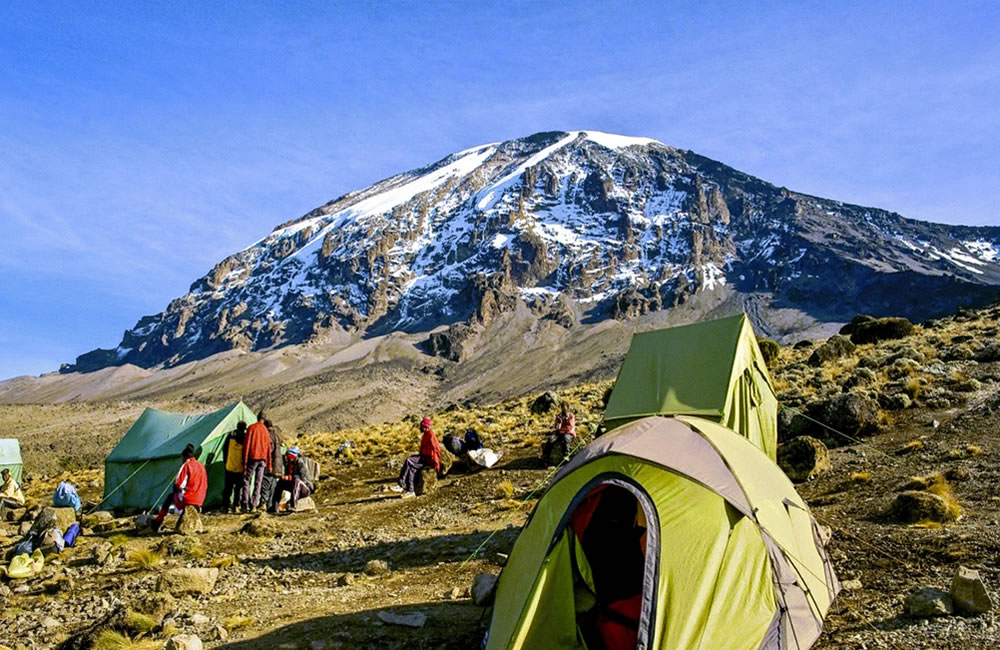Mount Kilimanjaro is a once-in-a-lifetime trip through five climate zones, from the jungle to the arctic tundra. With temperatures running from very cold to very hot and humid, it’s important to have the right gear to stay safe, warm, and comfortable. This complete packing list will make sure you’re ready for any challenge the Kilimanjaro may bring, whether you’re going on a high-class trip or a cheap climb.
Key Packing Principles for Kilimanjaro
Before we dive into the list, here are a few golden rules:
- Layering is everything: Temperatures shift dramatically — be ready to add or remove layers easily.
- Pack light but smart: Porters will carry most of your gear, but you’re limited to 15 kg (33 lbs) per duffel bag.
- Waterproof everything: Rain is unpredictable, and staying dry is critical.
- Comfort is key: This isn’t the place to break in new boots or try experimental gear.
Clothing: Base to Summit Layering System
Base Layers (Moisture-Wicking)
- 2–3 thermal tops (synthetic or merino wool)
- 2 thermal bottoms
- Sports bras/underwear (quick-drying)
Insulating Layers (Warmth)
- 1 fleece or softshell jacket
- 1–2 insulating tops (down or synthetic jacket)
- 1 warm trekking pants
- 1 fleece pants (for summit night)
Outer Layers (Weather Protection)
- Waterproof, breathable rain jacket (Gore-Tex recommended)
- Waterproof pants
- Down jacket (essential for summit night)
Trekking Clothes
- 3–4 short/long-sleeved trekking shirts
- 2 pairs of hiking pants
- 1 pair of shorts (for lower altitudes)
Sleepwear
- 1 warm base layer for sleeping
- Comfortable socks and beanie for cold nights
Footwear: Protect Your Most Important Asset
- Hiking boots (waterproof, broken in, high ankle support)
- Camp shoes (lightweight sneakers or Crocs)
- Gaiters (to keep mud, dust, and snow out)
- Wool/synthetic hiking socks (4–5 pairs)
- Thick summit socks (1–2 pairs)
Tip: Bring blister pads and foot powder to avoid discomfort and injury.
Head & Hand Protection: Defend Against Sun, Wind, and Cold
- Sun hat or wide-brimmed hat
- Buff or neck gaiter
- Beanie or fleece hat (for cold)
- Headlamp + extra batteries (essential for summit night)
- Sunglasses with UV protection
- Light gloves (liner gloves)
- Heavy gloves or mittens (waterproof and insulated)
Gear & Equipment: Your Trekking Lifeline
- Daypack (20–30L) with rain cover (you’ll carry this daily)
- Duffel bag (60–90L) for porters to carry your gear
- Trekking poles (highly recommended)
- Sleeping bag (rated to at least -10°C/14°F)
- Sleeping bag liner (for extra warmth and hygiene)
- Dry bags/stuff sacks (to organize and waterproof gear)
- Hydration system (CamelBak or water bottles – 3L total capacity)
- Insulated water bottle (for summit night – water can freeze)
Toiletries & Personal Care
- Biodegradable soap and shampoo
- Toothbrush & toothpaste
- Quick-dry travel towel
- Wet wipes (mountain showers!)
- Hand sanitizer
- Sunscreen (SPF 30+)
- Lip balm with SPF
- Toilet paper (bring your own)
- Small mirror
- Nail clippers and tweezers
- Personal medications (plus extras)
Note: Porters do not carry toiletries, so keep them handy in your daypack.
Health & Safety Essentials
- Personal first aid kit (plasters, antiseptic, blister treatment)
- Altitude medication (e.g., Diamox – consult your doctor)
- Anti-inflammatory tablets (e.g., ibuprofen)
- Electrolyte tablets or hydration salts
- Anti-diarrheal and antacid medication
- Motion sickness tablets (if prone)
- Insect repellent (for lower altitudes)
- Vaccination certificate (Yellow Fever if required)
Snacks & Extras
- Energy bars, nuts, dried fruits, and sweets
- Electrolyte drink mixes or hydration tablets
- Tea bags or instant coffee (if you’re picky)
- Journal or book for downtime
- Portable power bank
- Travel adapter (Type G – UK-style plug)
- Ziplock bags for trash or organizing items
- Cash for tipping your crew
Optional but Useful Items
- Lightweight camera or GoPro
- Mini duct tape or repair kit
- Knee braces if prone to joint pain
- Playing cards or small games
- Earplugs (for snoring tentmates)
- Small Kenyan or Tanzanian flag for summit photos!
What to Leave Behind
- Heavy books and electronics
- Jewelry or valuables
- Excessive cosmetics or colognes
- Cotton clothing (takes too long to dry)
- Tight-fitting or brand-new gear
Your Kilimanjaro trek will test your mind and body, and being ready is half the fight. Buy the right stuff, test it first, and remember that each item in your bag should have a reason for being there.
Pro Tip: Lay everything out before packing and do a trial hike with full gear to spot any issues early.




